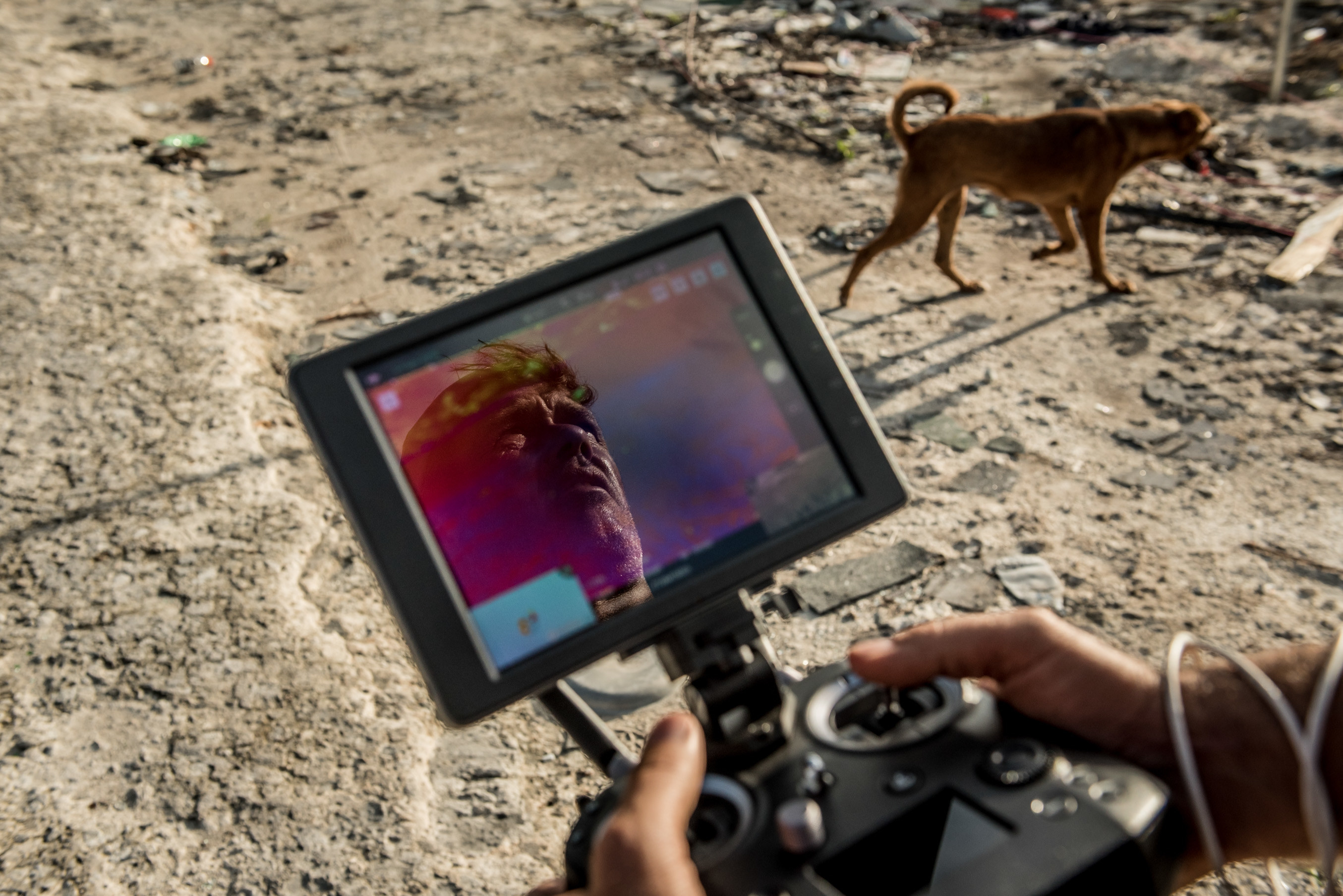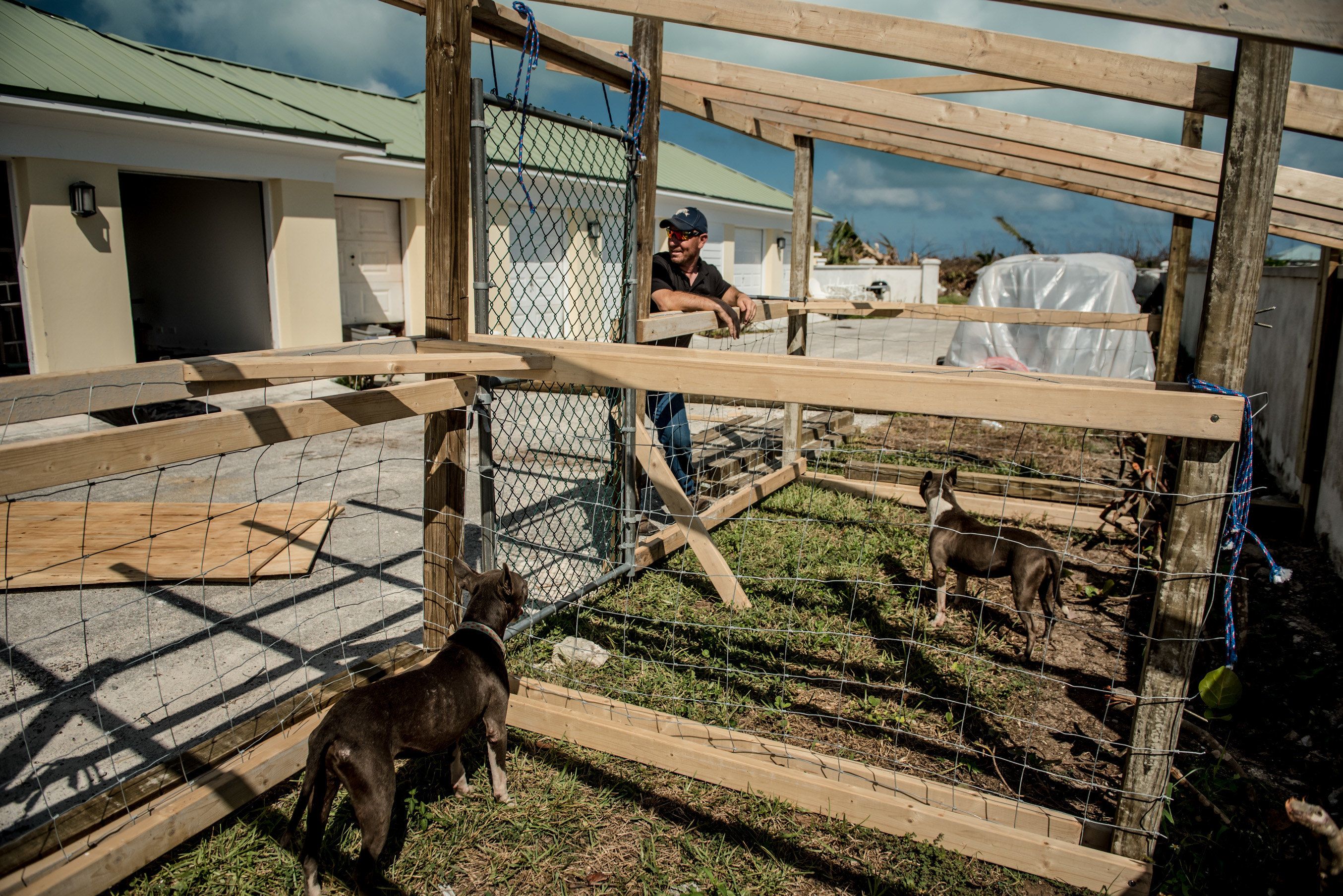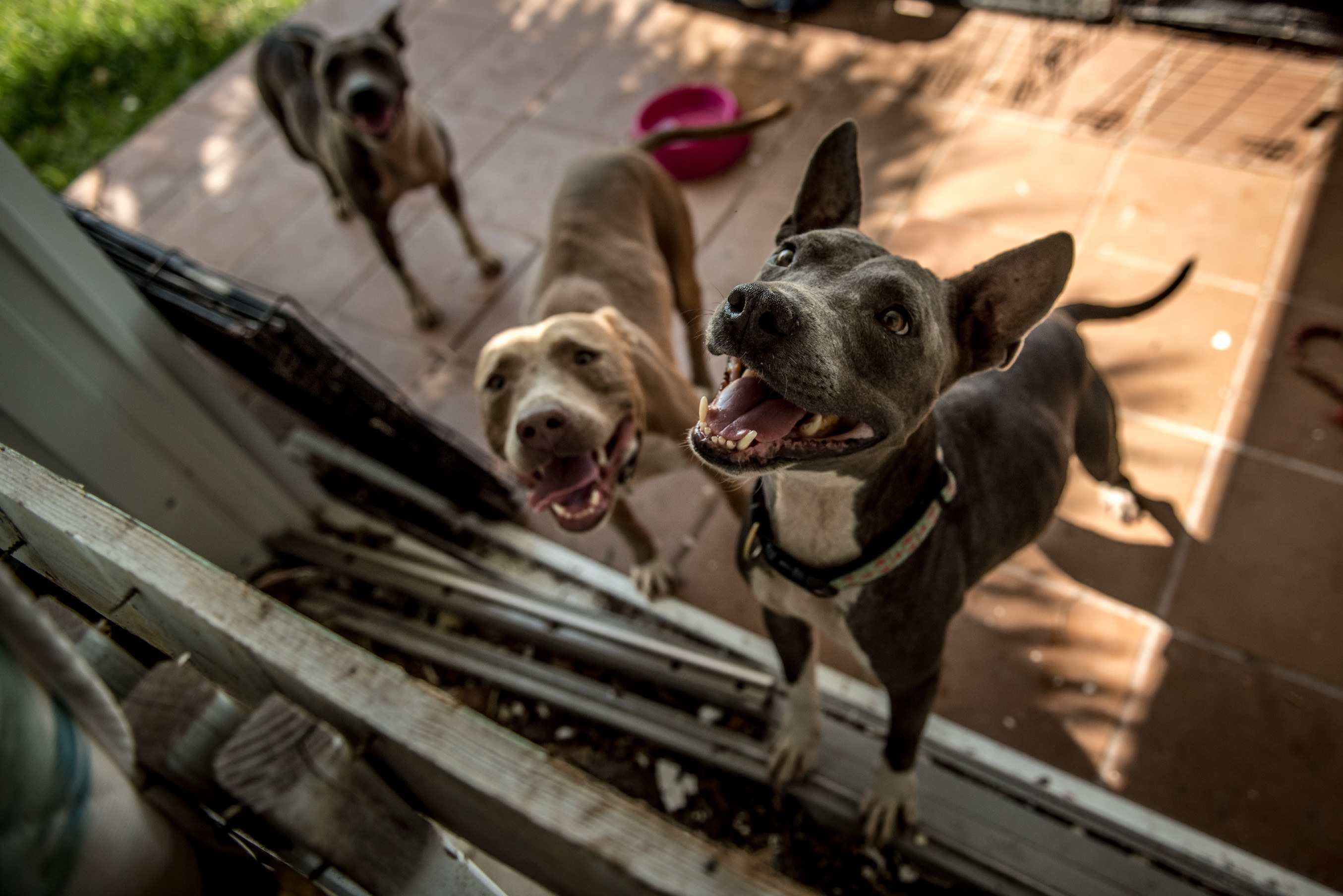
MARSH HARBOUR, Bahamas — They found Schnapps scrounging in a junkyard. His sister, Peach, wasn’t far away. She’d given birth to puppies at one point, but they were nowhere to be found. Hoops, a graying, soft-eyed pit bull, suffers from a harsh cough that shakes his lean body. He isn’t expected to make it much longer, but, who knows, he did just fight through a beast of a hurricane.
The three dogs are part of a scraggly crew who had been living among crumpled homes and piles of trash in the unwavering, heavy Bahamian heat for nearly two months after a historic Category 5 hurricane pummeled the Caribbean nation, turning most of Great Abaco Island into a debris field.
Although the death toll has barely inched higher — hovering around 60 people for weeks — many residents are still missing, and families are grappling with the fact that they may never get official confirmation of their loved ones’ fates. Scores of people are still homeless, living in overcrowded shelters, churches, and tents, without jobs and losing hope. Against that backdrop, the plight of lost or abandoned pets falls at the bottom of a lengthy to-do list.
That’s where a mishmash of aid groups, volunteers, local vets, and animal rescue teams armed with high-powered infrared drones come in. Since Hurricane Dorian ransacked the Bahamas on Sept. 1, Big Dog Ranch has rescued more than 151 dogs and cats that were trapped in rubble or roaming around trash heaps looking for scraps of food and water in the ruins of their old neighborhoods. The group has reunited more than 60 pets with their families, transported 50 dogs back to their 33-acre ranch in Florida, bought over 160 pounds of dog food, and has funded nearly 20 air and sea missions to bring in supplies. Bahamas Alliance for Animal Rights and Kindness has also been in over-drive, caring for unclaimed pets and trying to get them back to their humans.

“It’s human life versus animal life and I understand that, but now that the human life is at least safe, it’s time to really go in and go ahead and help these guys,” said Patrick McKann, who is helping Big Dog Ranch Rescue build kennels and man a makeshift veterinary center inside some damaged homes in Treasure Cay.
Known as the “Hurricane Cowboy,” the auctioneer from Virginia grew up around farm animals, making extra cash to help his family by riding auction horses and racing bulls. Since 2017, McKann has been saving animals from hurricanes, plucking chickens and guinea fowl trapped in cages and loading up trucks full of pigs, donkeys, and cows left behind in flooded farms during storms like Harvey and Florence.
“I grew up really poor, and I just ended up spending so much time riding and being with these animals,” the 43-year-old said. “In a bad situation, they’re usually low on the list or forgotten, and it just became my thing.”
He thinks he's saved more than 100 animals, including some unruly hogs, which he calls "little monsters that turn around and line you up like bowling pins and just run you down."

For the past month, McKann has been chasing down displaced dogs, like Shadow, a sweet, black collie mix found alone in the Sand Banks, feeding them twice a day, and helping construct a kennel to house the pups before they’re sent back to families or to shelters in the US.
“A lot of them are very standoffish, so we feed them for a while to build trust so you can get some trucks to them and get them safe, like them two,” McKann said, nodding to Peach and Schnapps. “Some of them had injuries, really wounded dogs. Broken paws. Every one of them is different, and we try to give them what they need.”
Rescuers have found dogs with broken paws, scrapes, heartworms, and other illnesses and infections, said Debbie Hilton, a foster manager with Big Dog Ranch. They pulled one dog, now named Sherlock, out from the rubble using a rope “like a lasso.”
“I cried watching that one,” she said.
Standing on the edge of what used to be the Mudd, a village of primarily Haitian immigrants that now looks like a giant bowling ball plowed through it, Douglas Thron points to the tiny white body pinging across the gleam of his infrared sensor screen. It’s a feral mutt, a potcake as Bahamians say, that Thron’s drone-operated, heat-sensing zoom cameras have picked up among the debris.
A drone video by Douglas Thron shows dogs captured in an infrared camera.
Thron first started using drones to find lost, frightened, and trapped animals displaced by natural disasters last year during California’s deadliest wildfire, which destroyed thousands of homes and sent people running for their lives with barely any time to corral their terrified pets.
Having used a drone to capture another wildfire’s sweeping destruction a few years earlier, Thron realized the machine’s unique ability to target a small animal’s bright body heat pulsing under collapsed roofs, melted cars, and mounds of debris.
“Dozens and dozens of cats were left behind,” Thron said. “The most crucial part of a disaster is a race against the clock. The sooner you can save the animal the better. [The drone] cuts down on valuable time and allows the rescuers to do what they do best and get the animals quick instead of trying to search around.”
Inspired by the realization that he was a “guinea pig” for this type of animal search and rescue, Thron started a GoFundMe to help purchase the $40,000 infrared drone. He has since found about two dozen dogs and cats left homeless in Dorian’s wake, honing their coordinates and then sending the spot to the various animal rescue groups.

It’s best to search for them in the early morning, Thron said, when the animals are resting or looking for something to eat. They’re easy to find from the sky, but saving them sometimes takes patience. They’re often skittish, hungry, and on guard while nursing cuts, rashes, and broken bones.
“Unless they’re injured, then I can go right in and grab them,” Thron said, before looking up from disassembling the drone. “Did you hear about the one we just found? The miracle?”
Earlier this month, Thron's infrared cameras picked up body heat deep beneath a collapsed building. Workers with Big Dog Rescue descended on the location and found an emaciated mutt pinned beneath an air-conditioning unit.
A video from Big Dog Ranch show's Miracle's rescue.
Although his body was broken and 50% of his mass and muscle had disappeared, he was able to wag his tail when they pulled him from the rubble, the group said on Facebook. They named him Miracle.
“It truly was a miracle. I don’t know how a dog could have possibly survived for a month basically wedged in between two AC units,” Thron said.
Like many of the dogs, Miracle has a long road of physical and emotional healing and recovery. Most have heartworms, which is usually deadly.
"He's getting stronger every day, though," Hilton said. "He's gained weight and he's a lot happier. He was hesitant with us before but now he likes to play."
For the humans, finding and nursing the animals back to health is a draining and exhausting, but also a fulfilling and heart-tugging mission. A handful of volunteers have adopted the storm dogs, giving them names like “Shadow” and “Betty Rubble.”
Thron brought home Duke, one of the first dogs he found roaming among the large shipping containers.
“Finding him here in the middle of everything before they had done any cleanup, that was pretty overwhelming,” he said. “I grew up with dogs, but he’s the first one I’ve ever had on my own. You just see what they’ve been through. It’s just… I don’t know, they need homes.”


